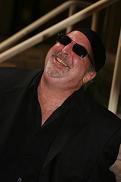
BLUES JUNCTION Productions
7343 El Camino Real
Suite 327
Atascadero, CA 93422-4697
info
- Home
- Letter From the Editor
- Tom Hyslop: A Personal Appreciation
- Top Ten Albums of 2022
- Dave's Top Ten List of Top Ten Lists
- An Appreciation of James Harman
- Album of the Year: The Duke Robillard Band They Called It Rhythm & Blues
- Album Review: Rick Holmstrom Get It!
- Album Review: The Phantom Blues Band - Blues for Breakfast
- Album Review: Bob Stroger & the Headcutters That’s My Name
- Album Review: Hash Brown - Stop! Your Evil Ways
- Archives
- Contact Us
- Links
Blues Piano: An Endangered Species
by Fred Kaplan
Screaming Stratocasters with Gaucho-style hats and harmonicas on steroids have been drowning out the tonal subtleties of the venerable acoustic piano in the great art form of American blues for almost forty years. But there was once a time when the piano was the omnipotent musical ruler, commanding an untold number of bandstands and juke joints across America from the turn of the century until the late 1950's.
The piano was once the king's voice on countless steamy blues records, purchased by a music hungry black audience who devoured artists like Georgia Tom Dorsey, Pine Top Smith, Leroy Carr, Pete Johnson, Amos Milburn, Memphis Slim, Lloyd Glenn, Jay McShann, Ray Charles, Big Maceo Merriweather, Charles Brown, Sunnyland Slim and many other great pianists.
Although the blues piano list is historical in itself, it has been sadly ignored for almost fifty forlorn years, largely in part to being subject to blues-revisionist history, including modern blues record company exploitation and a general lack of knowledge as to the supreme importance the piano played developing within the idiom of the blues. It is time for the trees in the forest to be seen.
Prior to World War II, the electric guitar shared accompanying duties with many rhythm sections. The piano was long in use as a house instrument by itself for many years across the first blues nation. Even when there was no available electricity in the Turpentine camps and myriad rural barrel houses, itinerant piano players reigned supreme in black dance music of the day. A good pianist could make a nice living traveling around playing for the local working population, if he could dodge bullets, bottles and fists during the evening work hours. Whorehouses were always another income stream for a good pianist.
A good piano player needed no rhythm section – he was the complete band. The left hand was the bass player, the right hand played both the chords and melody, stomping feet were the drums and the wailing, un-amplified voice steered the tapping patron's toes and alcohol consumption for the night. Most one-suit traveling blues pianists “borrowed” from each other’s repertoire, often claiming authorship to many songs from another musical territory or era.
Some brilliantly radiant guitarists such as Blind Blake and Scrapper Blackwell were very adept at imitating the piano on the guitar. Much of the wonderfully complex traditional Piedmont style of guitar playing is derived from roaming guitarists listening to the one-man-band styled blues pianists that were once prevalent and highly sought after for keeping working-class customers drinking and dancing.
Without the early blues piano players, blues would have not evolved into the beautifully eclectic, deep-ocean rich culture that has left an un-erasable mark on so much of today's modern music. Long before Muddy, Little Walter, Jimmy Reed and other great popular blues artists of the “sacred” 1950's, powerfully eloquent pianists from the 1920’s and 30's like Blind John Davis, Walter Roland, Roosevelt Sykes, Jimmy Yancey and many others, were influencing the next generation of blues musicians to drive blues music to it's amazing evolutionary path.
It was not until the early 1960's that blues came into the popular white music world spotlight through British purveyors such as Eric Clapton, the Rolling Stones, John Mayall and some American folk-music promoters. As American Black music tastes began to shift towards soul and R&B, blues began its twisted journey of devolving into a sad, faux-burlesque world, far away from its former golden glory and pure musical genius from noble artists who carried on their respective oral tradition. The formidable 78 RPM record was not unlike internet band width from a pre-MTV era, supplying the art of an oppressed, but brilliant culture to be remembered and cherished for future generations to discover.
Thankfully, there is much recorded magnificent blues out there on CD, but it requires diligent musical mining.
Your Musical Archeologist,
Fred Kaplan
Copyright 2022 BLUES JUNCTION Productions. All rights reserved.
BLUES JUNCTION Productions
7343 El Camino Real
Suite 327
Atascadero, CA 93422-4697
info
